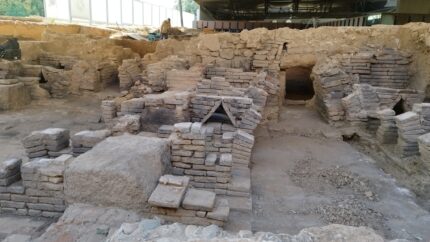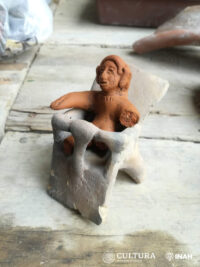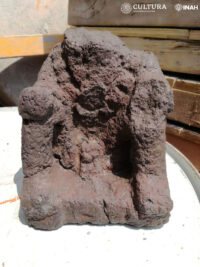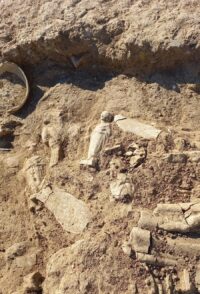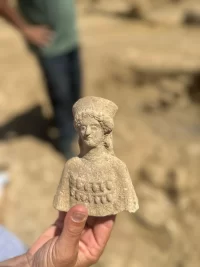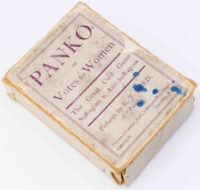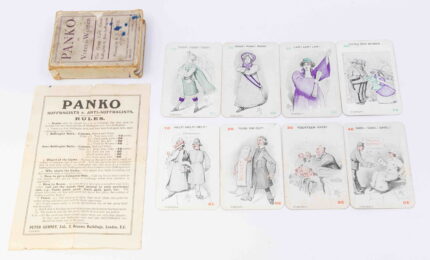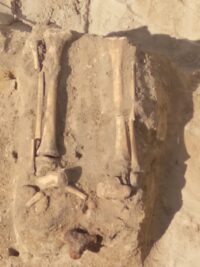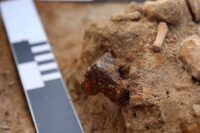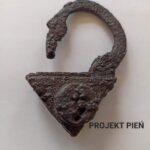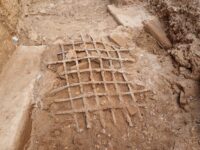 The ongoing excavation of the Roman House of the Amphitheater in Mérida, Spain, has made another extraordinary discovery. In the apodyterium (the changing room of a Roman bath) of the suburban villa, archaeologists found an intact iron grate that was once mounted in the window. These are very rare finds, but it is the second one to be discovered at the villa. The first was found in the kitchen of the domus 60 years ago.
The ongoing excavation of the Roman House of the Amphitheater in Mérida, Spain, has made another extraordinary discovery. In the apodyterium (the changing room of a Roman bath) of the suburban villa, archaeologists found an intact iron grate that was once mounted in the window. These are very rare finds, but it is the second one to be discovered at the villa. The first was found in the kitchen of the domus 60 years ago.
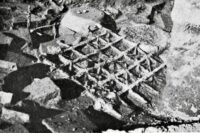 The apodyterium window grate was part of the exterior wall of the room. It became dislodged when the wall and ceiling collapsed, which is why bricks and tegulae (roof tiles) were found pinned underneath it.
The apodyterium window grate was part of the exterior wall of the room. It became dislodged when the wall and ceiling collapsed, which is why bricks and tegulae (roof tiles) were found pinned underneath it.
Roman villas had few external windows. They had open interior spaces — atria, peristyle gardens — to bring light and air to the rooms, so most of the windows were in the interior walls. The exterior windows were either very small or barred with grills to prevent break-ins. Few of these grates have survived, with the most notable examples at Herculaneum where they not only survived, but survived in situ, still embedded in the wooden window casings.

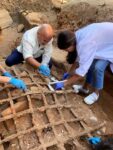 Only in the 1st century did glass blowers figure out how to make panes, but glass windows were prohibitively expensive and only affordable to the wealthiest Romans. A more affordable option was lapis specularis, a translucent selenitic gypsum extracted from mines in Spain, Sicily, Asia Minor and North Africa. Lapis specularis could be easily cut to size and split into thin layers, and it held up remarkably well to the elements, as long it didn’t get broken. According to Pliny, the best and clearest lapis specularis mined in sheets up to five feet wide was found in the area around Segóbriga, central Spain.
Only in the 1st century did glass blowers figure out how to make panes, but glass windows were prohibitively expensive and only affordable to the wealthiest Romans. A more affordable option was lapis specularis, a translucent selenitic gypsum extracted from mines in Spain, Sicily, Asia Minor and North Africa. Lapis specularis could be easily cut to size and split into thin layers, and it held up remarkably well to the elements, as long it didn’t get broken. According to Pliny, the best and clearest lapis specularis mined in sheets up to five feet wide was found in the area around Segóbriga, central Spain.
The House of the Amphitheater’s window grill was consolidated in situ, painted with plaster to keep the bars, corrosion materials and all, from being damaged in transport. It was lifted and moved to the National Museum of Roman Art where it will be cleaned and restored for eventual display.
